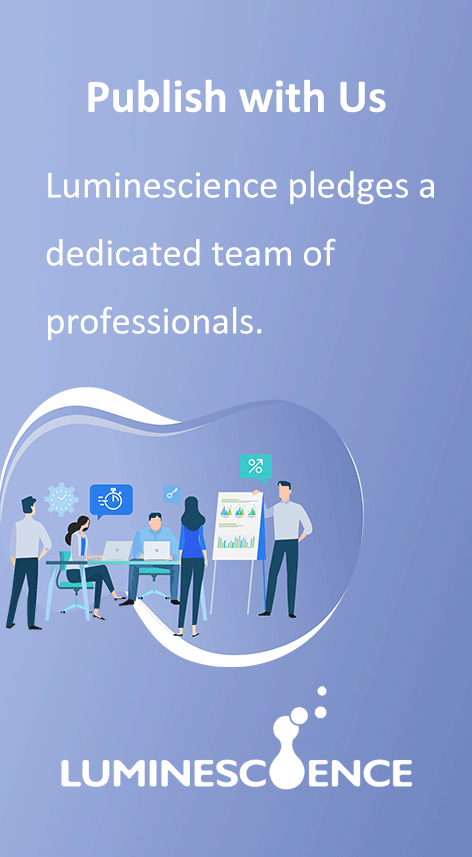Carlos Pérez-González 1 , Delfín Ortega-Sánchez 2 *
Correspondence: dosanchez@ubu.es
DOI: https://doi.org/10.55976/rppe.320251431178-190
Show More
[1]Andrée, M., Anderhag, P., Björnhammer, S., & Salomonsson, N. (2024). Aesthetic experience in technology education: The role of aesthetics for learning in lower secondary school robotic programming. Frontiers in Education, 9, 1291070. https://doi.org/10.3389/feduc.2024.1291070.
[2]Ben-Horin, O., Sotiriou, M., Espeland, M., & Strakšienė, G. (2023). Towards transdisciplinarity in global integrated science-arts practices in education? A Janus approach. Cogent Education, 10(2), 2287895. https://doi.org/10.1080/2331186X.2023.2287895.
[3]Campbell, D. T., & Stanley, J. C. (1995). Diseños experimentales y cuasiexperimentales en la investigación social. Amorrortu editores.
[4]Cardullo, V., & Burton, M. (2025). Breaking barriers: Utilizing a STEM equity framework for analyzing primary picture books. Early Childhood Education Journal, 53(6), 1681–1692. https://doi.org/10.1007/s10643-024-01708-7.
[5]Chowdhury, T. B. M., Holbrook, J., & Rannikmäe, M. (2024). A model conceptualising trans-disciplinarity within school science education based on a systematic literature review. International Journal of Science Education, 46(12), 1169-1191. https://doi.org/10.1080/09500693.2023.2281007.
[6]Chu, Y. L. L., & Toh, T. L. (2020). A framework for designing mathematics instruction using comics at the primary school level. Journal of Research and Advances in Mathematics Education, 5(3), 218-230. https://doi.org/10.23917/jramathedu.v5i3.11373.
[7]Costantino, T. (2017). STEAM by another name: Transdisciplinary practice in art and design education. Arts Education Policy Review, 119(2), 100–106. https://doi.org/10.1080/10632913.2017.1292973.
[8]Gil Pascual, J. A. (2011). Técnicas e instrumentos para la recogida de información. Universidad Nacional de Educación a Distancia.
[9]Guyotte, K. W., Sochacka, N. W., Costantino, T. E., Walther, J., & Kellam, N. N. (2014). Steam as social practice: Cultivating creativity in transdisciplinary spaces. Art Education, 67(6), 12–19. https://doi.org/10.1080/00043125.2014.11519293.
[10]Helvacı, İ. (2020). Investigation of STEAM-Themed Thesis Conducted in Turkey in the Field of Educational Sciences in terms of Visual Arts. Social Scientific Centered Issues, 2(2), 56-64.
[11]Hernández-Sampieri, R., & Mendoza, C. P. (2018). Metodología de la investigación: Las rutas cuantitativa, cualitativa y mixta. McGraw-Hill Educación.
[12]Hughes, B. S., Corrigan, M. W., Grove, D., Andersen, S. B., & Wong, J. T. (2022). Integrating arts with STEM and leading with STEAM to increase science learning with equity for emerging bilingual learners in the United States. International Journal of STEM Education, 9(1), 58. https://doi.org/10.1186/s40594-022-00375-7.
[13]Hunter‐Doniger, T. (2021). Early Childhood STEAM Education: The Joy of Creativity, Autonomy, and Play. Art Education, 74(4), 22–27. https://doi.org/10.1080/00043125.2021.1905419.
[14]Lim, E., & Kwon, H. (2020). Research trends and issues of social studies related STEAM education. Social Studies Education, 59(3), 209-221. https://doi.org/10.37561/sse.2020.09.59.3.209.
[15]Markauskaite, L., Schwarz, B., Damşa, C., & Muukkonen, H. (2024). Beyond disciplinary engagement: Researching the ecologies of interdisciplinary learning. Journal of the Learning Sciences, 33(2), 213-241. https://doi.org/10.1080/10508406.2024.2354151.
[16]McMillan, J. H., & Schumacher, S. (2005). Investigación educativa: Una introducción conceptual (5.ª ed.). Pearson Educación.
[17]Navarro, E. (Ed.), (2017). Fundamentos de la investigación y la innovación educativa. Universidad Internacional de La Rioja.
[18]Nikolopoulou, K., & Tsimperidis, I. (2023). STEM education in early primary years: Teachers' views and confidence. Journal of Digital Educational Technology, 3(1), ep2302. https://doi.org/10.30935/jdet/12971.
[19]Pagano, L. C., George, R. E., Uttal, D. H., & Haden, C. A. (2024). “You gotta tell the camera”: Advancing children's engineering learning opportunities through tinkering and digital storytelling. Child Development, 95(5), 1558–1571. https://doi.org/10.1111/cdev.14094.
[20]Penner, A. (2019). STEAM and social studies: Creating an integrated classroom [Master's capstone project, Hamline University]. DigitalCommons@Hamline. https://digitalcommons.hamline.edu/hse_cp/288.
[21]Perales, F. J., & Aróstegui, J. L. (2024). The STEAM approach: Implementation and educational, social and economic consequences. Arts Education Policy Review, 125(2), 59-67. https://doi.org/10.1080/10632913.2021.1974997.
[22]Pérez, R., Galán, A., & Quintanal, J. (2012). Métodos y diseños de investigación en educación. UNED Universidad Nacional de Educación a Distancia.
[23]Sanz-Camarero, R., Ortiz-Revilla, J., & Greca, I. M. (2023). The place of the arts within integrated education. Arts Education Policy Review, 1–12. https://doi.org/10.1080/10632913.2023.2260917.
[24]Strakšienė, G., Ben-Horin, O., Espeland, M., & Robberstad, J. (2022). Towards a rationale for science-art integration as a transdisciplinary signature pedagogy. Cogent Education, 9(1), 2087459. https://doi.org/10.1080/2331186X.2022.2087459.
[25]Su, J., Yim, I. H. Y., Wegerif, R., & Wah Chu, S. K. (2024). STEAM in early childhood education: A scoping review. Research in Science & Technological Education, 43(2), 495–511. https://doi.org/10.1080/02635143.2023.2296445.
[26]UNESCO (2025, February 17). Revitalizing STEM education to equip next generations with STEM competency. https://www.unesco.org/en/articles/revitalizing-stem-education-equip-next-generations-stem-competency.
[27]Wade, C. B., Koc, M., Searcy, A., Coogle, C., & Walter, H. (2023). STEAM activities in the inclusive classroom: Intentional planning and practice. Education Sciences, 13(11), 1161. https://doi.org/10.3390/educsci13111161.
Copyright © 2025 Carlos Pérez-González, Delfín Ortega-Sánchez

This work is licensed under a Creative Commons Attribution 4.0 International License.
Copyright licenses detail the rights for publication, distribution, and use of research. Open Access articles published by Luminescience do not require transfer of copyright, as the copyright remains with the author. In opting for open access, the author(s) should agree to publish the article under the CC BY license (Creative Commons Attribution 4.0 International License). The CC BY license allows for maximum dissemination and re-use of open access materials and is preferred by many research funding bodies. Under this license, users are free to share (copy, distribute and transmit) and remix (adapt) the contribution, including for commercial purposes, providing they attribute the contribution in the manner specified by the author or licensor.


Luminescience press is based in Hong Kong with offices in Wuhan, China.
E-mail: publisher@luminescience.cn